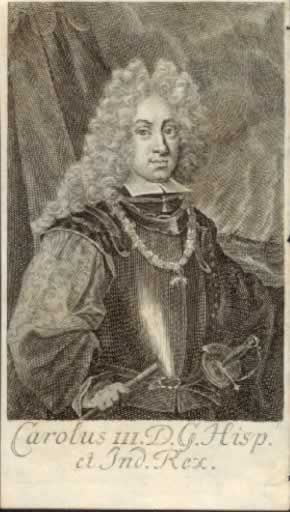

Charles was the last Spanish Habsburg, a powerful dynasty that killed itself through inbreeding. Still, there was no hiding the outcome of centuries of inbreeding. But the family hired artists to make him look strong and healthy.

With all these genetic issues, it's difficult not to wonder: what did Charles II of Spain look like? His prominent Habsburg jaw made it nearly impossible for the king to eat, and he constantly drooled. And that was just the beginning: the Spanish Habsburgs intermarried on purpose for over 200 years, making them among the weirdest royals in history. His father married his own niece, meaning that Charles's mother was also his cousin, and his dad was also his uncle. And that's what ultimately explains Charles II of Spain's cause of death: by 35 all his hair fell out and he could barely walk, and before he turned 39 he died without an heir, plunging Europe into a bloody war as various nations vied for his crown.Ĭharles II of Spain's family tree was intentionally inbred. In fact, Charles II of Spain's inbred birth made him more inbred than the children born of a union between brother and sister. Royal inbreeding caused mutations and birth defects that could be even worse than the already estimable genetic mutations from incest. Charles II of Spain, king of one of the largest empires in the world, was barely able to talk or walk - all because his dynasty was so inbred. He suffered from rickets, hallucinations, and an oversized head. For this, we should be thankful.He could barely eat because of his disfigured jaw. Charles was pivotal in bequeathing an incomparable artistic legacy to the history of the visual arts in Great Britain.

One cannot underestimate the impact of this collection on Caroline court culture-it was nothing less than transformative.

The jewels in the crown of the collection were without question Titian’s eleven half-length portraits of Roman emperors (1536–40 destroyed by fire in 1734) which were inspired by the Roman historian Suetonius’s Lives of the Caesars and the nine canvases of Italian renaissance painter Andrea Mantegna’s Triumphs of Caesar, which celebrated the victories of Julius Caesar and have resided in Hampton Court Palace for nearly 400 years. Charles purchased it at a colossal cost (it took him two years to pay what he owed). His wish was granted in 1628, when the collection of the Gonzaga dukes of Mantua came up for sale. The consequence of the visit was that Charles set his heart on a comparable collection of art for his own court when king. In her dowager years back in France in the late 1660s, she spent much of her time at her country retreat of Chȃteau de Colombes, seven miles north-west of Paris, which was decorated with numerous family portraits, “moderne” masters, such as paintings by Anthony van Dyck, Guido Reni, and Orazio Gentileschi, and many examples of Italian renaissance art, including works attributed to Titian, Tintoretto, and Correggio, which demonstrates her abiding affinity with her husband’s collecting tastes. The couple remained steadfast in their love for one another until Charles’s execution in 1649. By the 1630s, she had blossomed into a notable patron of the arts in her own right, of the visual arts and the dramatic arts, luxury goods and devotional objects, buildings and interior designs. Although she has often been neglected as an important cultural influence at the Caroline court, Charles I’s wife, the French Catholic Queen Henrietta Maria, who was the youngest daughter of King Henry IV and Marie de Medici, whom Charles married in 1625, shared and encouraged Charles’s collecting palette, particularly after the death of Buckingham, at which point she became the king’s chief emotional counsellor.


 0 kommentar(er)
0 kommentar(er)
